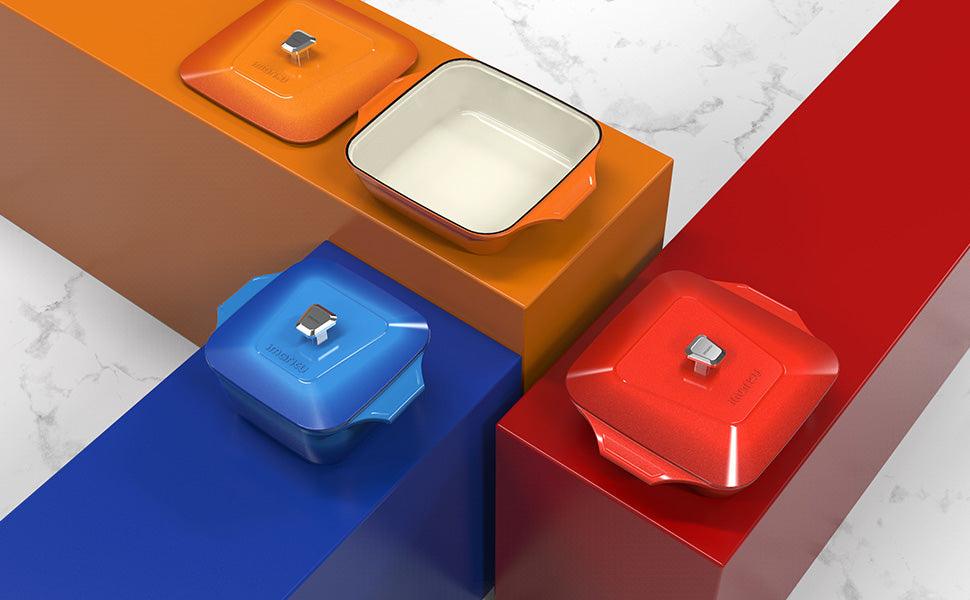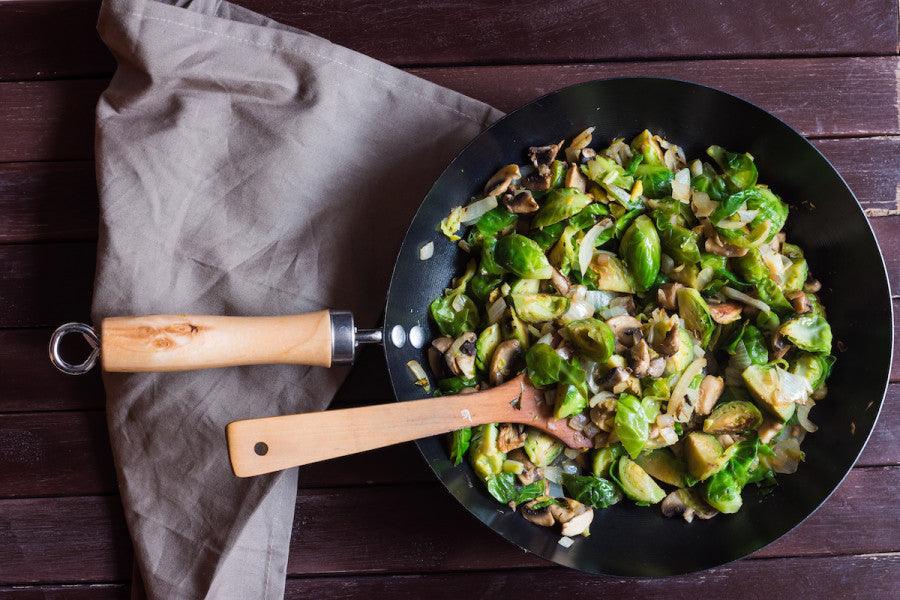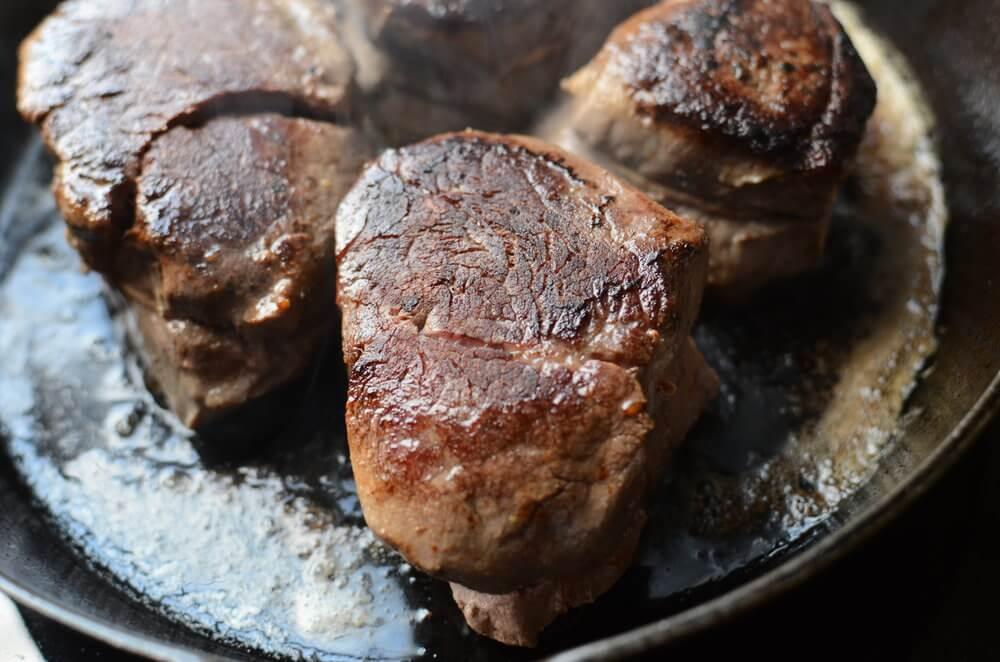TABLE OF CONTENTS
A Dutch oven can support many cooking needs. You can use it for searing, baking, and cooking. However, all the credit goes to its exceptional heat retention properties. If you are new to Dutch ovens, you can go through the following. We will know more about this cookware. We will cover its pros and cons. Also, we will be aware of the mistakes that you need to avoid while using a Dutch oven.
Moreover, the following article will include care instructions and a few alternatives to this cookware. In the end, we will answer all your queries.
Overview
A Dutch oven is multi-tasking cookware. You can use it to prepare soups, stews, meat, or braises. Options are many, and you will have to explore more to make the most out of your cookware. You can cook a wide range of dishes, including fried chicken, crusty bread, and sauces. It is reliable cookware that lasts long. Moreover, it has been around for more than hundreds of years. But it has received the most appreciation in recent times.

What is a Dutch Oven?
A Dutch oven is cookware that comes with a short but wide design to support the different cooking needs of users. You can use it to sear your meat. You can use it for cooking wet dishes as well. Yes, the design makes the product super versatile. Also, it is heavy and features a tight-fitting lid. More importantly, you can use it on an oven or stove. The pot will have thick walls and a base. The heavy design will maintain the internal temperature stability of your cookware.
Additionally, this cooker will come with a handle on either side. The cookware handle will make lifting easy and safe. The product is available in different colors, materials, and sizes. Therefore, you will have a considerable collection. You will not find much difference between the design of stockpots and Dutch ovens. However, you can use a Dutch oven for many kitchen tasks. It is the best for complex cooking, including stirring up a stew or making a roast. You can use this pot for simple cooking tasks as well. Yes, it can boil your pasta and maintain the warmth for a long. Once you have this cookware, you can try whatever you want. There will be no turning back!
Pros and Cons of Dutch Ovens
You can expect many benefits and a few downsides. When versatility and durability are benefits, price and weight are downsides. Here are the pros and cons in detail.
Pros
- Easy to Accommodate: Dutch ovens are available in different sizes. You can buy one based on cooking needs and storage availability. They will not take more space in your kitchen cabinet. Moreover, there will not be any additional pieces, including cords. You can keep it in any convenient place and use it whenever needed. The minimal storage requirements make it a preferred choice for many.
- Stable: In the current condition, you will find many options in lightweight cookware. The benefit is easy handling. But the downsides are less stability and less durability. However, a Dutch oven is heavier compared to its competitors. The weight makes it stable and well-balanced. Also, you can expect high heat retention and sturdiness.
- Muti-tasking: As mentioned earlier, a Dutch oven is versatile. It will not limit your cooking choices. You can try a lot of variations. You can bake, roast, boil, and fry. Also, the enameled cast iron makes it ideal for an open flame.
- Better Efficiency: A Dutch oven will have a thick base and thick walls. Therefore, it can retain heat for a long time. Also, you can expect varied textures. You will get the desired stability and balance while cooking. Also, handles will ensure easy usage.
- Curb Appealing: Dutch ovens can boost the curb appeal of any kitchen. They look exceptional and serve the best. They are available in different sizes and colors. You can choose one that complements other decors of your kitchen.
Cons
- Not Automatic: You cannot set timing on a Dutch oven. You cannot program it to start cooking at any specific time. But this feature is available in some other cookware products.
- Heavy Weight: Dutch ovens are heavy, and you might not find them the best choice while looking for lightweight kitchen appliances.
- Expensive: You will find a quality Dutch oven more expensive. However, you will have affordable options.
- Excessive Hot: A Dutch oven can change your kitchen temperature. It can make your kitchen hot.
- Specific Care: This cookware will require special care. You might need to spend time and effort to get the desired durability and efficiency.
- Time-consuming: The material and thickness take time to heat up. Therefore, it might take more time to cook some specific foods.

How to Use a Dutch Oven
You can use it the same way you use your saucepans or stockpots. However, a Dutch oven will retain the heat for a long. Here are tips you can follow while using a Dutch oven for the first time.
- Deep Sear: First, you will have to heat the pot and then add a small amount of the oil. After adding oil, you can add your chicken immediately. Otherwise, the oil will burn or overheat. Both will impact your cooking experience. Also, you can add oil to the meat directly.
- Lid Usage: While making soups, cover the pot completely. You will have to be careful since the lid will be extremely hot. While preparing your sauce, leave a gap in the cover for evaporation. You can remove it during the final stages of cooking.
While cooking braises, stews, and soups, you can use a low temperature. Cooking will take time, but it will mix the flavor of ingredients and tenderize your meat.

How to Clean and Care Dutch Ovens?
As mentioned above, a Dutch oven will have specific cleaning requirements. Even if the cookware is durable, you can damage the enamel with rough handling. Here are the cleaning requirements you can go through.
Clean
- Start with Outside: Prepare a cleaning solution with water and baking soda. Avoid using steel wool as it can damage the material. Instead, consider using a sponge. It will remove grime, stickiness, and spills.
- Gentle Interior Cleaning: While cleaning the interior, you need to be careful. You will have to avoid scrubbing. If something sticks to the bottom, you can soak the cookware with hot water and baking soda or soap. Leave it overnight, and you can remove the stickiness with a sponge. Even if you burn something, you can soak it for a few hours. Add boiling water and soda while soaking. You will find cleaning easy. However, you will have to avoid using steel wool.
Care
You will have to avoid the following mistakes while using a Dutch oven.
- Using Extreme High Heat: Many of us use high heat while cooking. However, you will have to avoid high temperatures when using a Dutch oven. It has an excellent heat retaining ability. Hence, you can use medium-high heat, medium, or low heat. The high temperature will cause sticking and burning. However, you can use high heat while reducing the sauce amount or even boiling water.
- Pre-heating on High Heat: You will have to avoid heating an empty Dutch oven. It will damage the enamel and might lead to cracking. Moreover, add some oil before heating this cookware.
- Cooking without Oil: The enamel of this cookware appears glossy. But the product is not nonstick, and you will have to cover the entire bottom surface with water or oil to prevent overheating or burning.
- Using Metal Cooking Tools: You should avoid using metal spatulas and serving spoons with a Dutch oven. Metal tools will cause scratching and impact the efficiency and durability of your product. Hence, you can only use heat-resistant plastic, wood, or silicone.
- Not Drying Up: Dutch Oven is not dishwasher safe. You will have to clean it using your hands. Also, dry it up completely before storing it. Any moisture can cause rust. Moreover, you will have to dry the lid.

Dutch Oven Buying Guide
While buying a Dutch oven, you will have to go through a few buying considerations. Material, design, size, and price are the considerations. Here are more details.
- Material: You will have a few options in the material. We can take the example of stainless steel, cast iron, ceramic, and enameled cast iron. Stainless steel features minimal maintenance requirements. However, cast iron will have an excellent heat retaining ability. Also, it will require special cleaning. The same is about the Enamelled cast iron. It offers good heat retaining ability. However, the maintenance requirements will be minimal. Also, it is available in many inspiring colors and helps with maximum durability. Ceramic is lightweight and perfect for bread and stews. You can choose any based on your preferences.
- Size: Dutch ovens are available in different sizes. You will have to find one that meets your cooking needs.
- Design: You will have many color options. You can go with light or dark colors based on your interior designs. You can choose from cherry red, grenadine, black matte, dark blue, and graphite grey.
- Lid: You can get a spiked design with rounded spikes underside. It will support condensation and keep your food moist. You will have many other lid options, including raised ring lids.
- Cost: Your budget will have a determining role. You can expect a better solution with a flexible budget. However, there will be affordable options.
Alternatives to Dutch Ovens
If you do not prefer slow cooking and heavy cookware, you can consider the alternatives. They will offer fast cooking, cost-effectiveness, better efficiency, and extreme durability.
8-Piece Nonstick Set
8-Piece Nonstick Set is versatile and durable. It has various styles to support different cooking needs. Also, the visually appealing look can boost the appearance of any kitchen.
Pros
- Versatile and durable
- Tempered glass lids
- Quick heating & Silicon touch handles
- Unique 3D diamond design
Cons
- Requires specific cleaning

12" Stainless Clad Pan
You can use the 12" Stainless Clad Pan for sautéing veggies, making scrambled eggs, and searing meat. Also, it will distribute heat evenly and prevent sticking. You will find cooking easy and fast.
Pros
- Outstanding quality and exceptional durability
- Fast heat absorption and rust resistance
- Nonstick and healthy cooking
- Ergonomic handle and firm grip
Cons
- It might not be perfect for all cooking styles

3-Piece Fry Pan Set
3-Piece Fry Pan Set comes with a frying pan, a knife, and a sharpening stone. You can use this frying pan for deep-frying, sautéing, frying, braising, and cooking. Also, the multipurpose knife will support different cutting needs in your kitchen.
Pros
- Premium quality and versatile
- Resistance to wrapping
- Multi-purpose knife for chopping, dicing, or cutting
- Easy to store
Cons
It does not have a lid.
Frequently Asked Questions
Why Do You Need a Dutch Oven?
A Dutch oven is versatile, and you can use it for different cooking purposes. Also, it will transfer heat to all directions to ensure smooth and easy cooking. You can expect advanced durability and desired stability as well. Moreover, it will have a lid to retain food moisture. It is safe to use and can be the best while looking for a multipurpose cooking appliance.
Does a Dutch Oven Need Special Care?
Yes, Dutch ovens will require special care. Many things will depend on the material. However, most of them will require hand cleaning. Also, you will have to dry them up properly to prevent rust. More importantly, you cannot use most kitchen tools with Dutch ovens. Before buying the product, you can check the maintenance requirements to get the desired durability.
When Should I Use a Dutch Oven?
You can use a Dutch oven for different cooking styles. However, it is the best for soup, braises, sauces, boiling, and stews. You can use it for browning veggies and meat. Also, this cookware can help you to bake your bread. You can try most things with a Dutch oven.
When Should You Avoid a Dutch Oven?
A Dutch oven is a bit heavier. Therefore, it might not be the best choice for transportation. For outdoor exploration, you will need compact and lightweight cookware.






















Leave a comment
All comments are moderated before being published.
This site is protected by hCaptcha and the hCaptcha Privacy Policy and Terms of Service apply.